Equipment listings
viernes 26 de abril de 2019
Número: 80
The army releases some equipment which it has acquired to meet specific needs and is testing others to assess their incorporation.

The army has just made its debut in the small sector of the Remotely Piloted Aircraft Systems with the receipt of the Orbiter 3. This is in addition to the delivery of the Special Operations Medium Vehicle (VMOE in Spanish) to the Special Operations Command and other new equipment which is in the test phase in different units in order to meet specific needs such as cleaning routes (Husky 2G), the towing of artillery items such as the Light Gun (SK-95), or the combination of ergonomics and protection in the women’s vest.
ORBITER
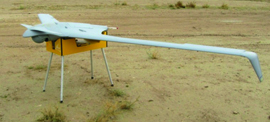
Faced with the need to anticipate the appropriate security and protection measures against threats which Spanish troops face in operation zones, the Army has acquired 2 Orbiter 3B systems. These Remotely Piloted Aircraft Systems (RPAS) will allow for the convenient identification of the aforementioned threats and will obtain the necessary information to give an appropriate and proportional response.
The Orbiter 3 is a class I small RPAS, the first of its kind to be owned by the Armed Forces. Each one has various aircrafts, control stations on the ground, as well as the necessary launching and recovery equipment.
The Information and Tracking Artillery Group II/63 was designated to support the approval tests for this new RPAS; one of the two systems will remain in Spain, whilst the other will be deployed to the operation zone very soon in order to meet the protection needs of Spanish troops abroad and improve their ability to respond to threats.
VMOE
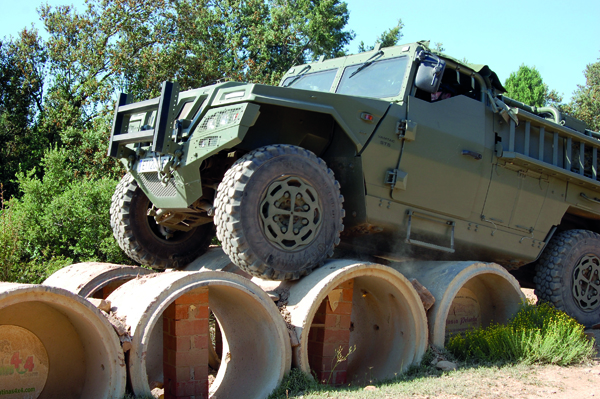
Special Operations Command has already recieved the first two units of the vehicle designed to respond to land infiltration needs from its operational teams: the Special Operations Medium Vehicle (VMOE in Spanish), with which the teams increase their protection capabilities when facing light weapons, mines and explosive artefacts.
In this way, the Special Operations Command has specific mobility means which contribute to the fulfillment of its deep land infiltration missions.
It is a vehicle which provides an increase in mobility, fire power and logistical autonomy which makes it easier to operate during long periods of time, and with the ability to transport material with specific and essential uses in order to fulfill the mission. In short, a vehicle which is capable of being transported on water, land and in the air wherever it is needed and which allows Special Operations missions to be conducted wherever high mobility means are necessary.
Soon…
VAMTAC – SK-95
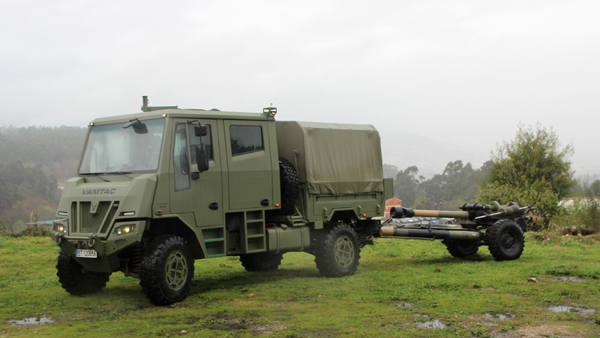
The 7th Field Artillery Group was designated as the pilot unit to test the High Mobility Tactical Vehicle (VAMTAC in Spanish) SK-95, designed to tow the Light Gun howitzer and replace the older URO MAT-18.6, which has carried out this mission for the last 20 years with good results.
The 2nd Battery is responsible for carrying out the field tests on the vehicle, which began in February and will continue until April. The objective is to test how it responds when loaded with the equipment and in different types of terrain, and to indicate possible improvements to the manufacturer, Urovesa. The Galician company also produces the VAMTAC ST5, an off-road model of which the army has acquired over 100 in its different configurations and which has become the Army’s new standard 1.5 tonne loading capacity model.
In fact, the VAMTAC SK-95 has the same loading bay as the VAMTAC ST5, with added compartments which allow for parts to be secured and for the vehicle to get in to position in the most agile way possible.
Its principle mission will be to facilitate off-road movement of the Army’s light howitzers, although it will also transport the crew: up to three soldiers (including the driver) in the cabin, and up to 14 in the cargo área.
WOMEN´S VEST
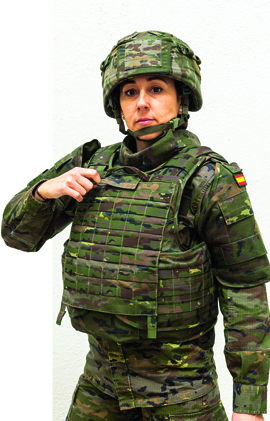
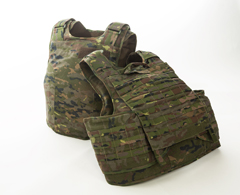
The Army is planning to acquire two new kinds of vest, one which is anti-fragment and another which is the type used by the police, specially designed for female personnel. Currently, units from the Light and Armoured Infantry are testing prototypes of the first kind of vest, and units from the Military Police are testing prototypes of the second. Balistic and anti-fragment protection tests will be conducted in laboratories in the ‘La Marañosa’ Technological Institute, in San Martín de la Vega (Madrid).
The anti-fragment vest has been made to provide greater comfort and better weight distribution. They also kept in mind the compatability of the vest with ballistic plates which are already on the market.
If they pass the tests favourably, the Army will start the process of acquiring these new materials, which will be available in different sizes. The police style vest, based on currently available models - principally, those used by the Civil Guard - could be received at the end of this year, while the anti-fragment vests, which have to go through a more complicated process, will arrive in units throughout 2020.
Fact sheet
The anti fragmentation properties of the new vest will be at V50 value (the speed at which a standard 1.1g fragment has a 50% probablitity of piercing the armour-plating).
Furthermore, it has a quick release function, which allows the vest to be removed in case of emergency (contact with flammable liquids, falling into water, etc.) by simply pulling a strap.
For its part, the ‘police’ style vest comes with protection against certain calibres, such as against knife attacks.
Husky
Personnel from the 1st Engineer Regiment have been made responsible for testing the interoperability between the new cable detectors (WD) which have been installed in the Husky vehicle and the state-of-the-art panels of its ground penetration radar.
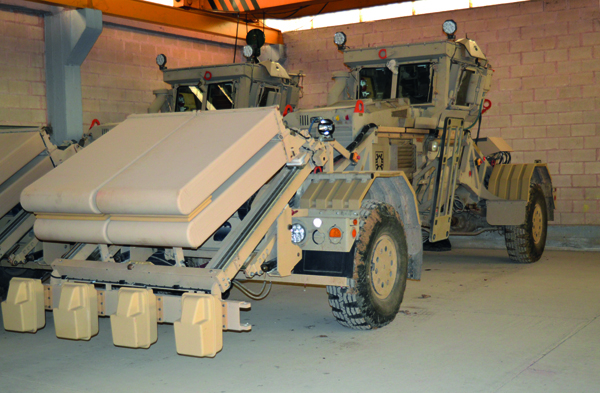
Cables are used (to a greater or lesser extent) in practically all explosive devices, so by detecting the cables the WD can detect the device. This, combined with the radar’s ground density readings, allows the operator to have more elements to their assessment.
This is a great help when it comes to interpreting the radar’s readings, something which requires many hours of training and is no simple thing. This integration will allow for a reduction in the number of false positives and will improve the use of gathered information and the analysis after the mission. Furthermore, information about the layout of the threat greatly improves the decision making of the chief of the route clearing centre and the deactivation teams.
Spain is the first country in which this integration has been carried out, meaning the Armed Forces has put itself at the vanguard with regards to explosive device detection equipment.
Thanks to the Husky 2G-WD, it has the most modern and effective system in the fight against improvised explosive devices..
UNIDADES DEL EJÉRCITO
- Araba Álava |
- Albacete |
- Alicante |
- Almería |
- Asturias |
- Ávila |
- Badajoz |
- Barcelona |
- Burgos |
- Cáceres |
- Cádiz |
- Cantabria |
- Castellón |
- Ceuta |
- Ciudad Real |
- Córdoba |
- A Coruña |
- Cuenca |
- Girona |
- Granada |
- Guadalajara |
- Gipuzkoa |
- Huelva |
- Huesca |
- Islas Baleares |
- Jaén |
- León |
- Lleida |
- Lugo |
- Madrid |
- Málaga |
- Melilla |
- Murcia |
- Navarra |
- Ourense |
- Palencia |
- Las Palmas |
- Pontevedra |
- La Rioja |
- Salamanca |
- Segovia |
- Sevilla |
- Soria |
- Tarragona |
- Santa Cruz de Tenerife |
- Teruel |
- Toledo |
- Valencia |
- Valladolid |
- Bizkaia |
- Zamora |
- Zaragoza



